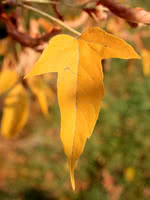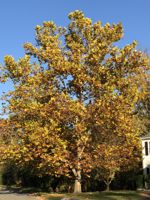Mon-Fri 9am - 5pm Mountain time
Manitoba Maple vs American Sycamore
Acer negundo
Platanus occidentalis
NOT AVAILABLE THIS SEASON - MIGHT RETURN
Manitoba Maple is a fast growing tree with great fall color. These trees are typically grown as feature or shade trees on larger properties and acreages. Manitoba maples are cold hardy and tolerant of a wide range of soil moisture conditions.
Note that Manitoba Maple is considered toxic to horses.
American Sycamore is the largest tree native to eastern North America. Generally too large and messy to be a street tree, American Sycamore thrives in large, open spaces, such as an acreage or farm.
The bark is one of the main features that draw people to this tree. The outer bark flakes off in irregular pieces to reveal an attractive white, green, and cream colored inner layer, providing winter interest.
American Sycamore has an extremely fast growth rate, gaining up to 6 ft in one year, and will easily reach its mature height in a short period of time. Be wary of this trees' root system, as it's typically very extensive and needs lots of room to expand.
Manitoba Maple Quick Facts
American Sycamore Quick Facts
In row spacing: 2.4 - 3 m (8 - 10 ft)

